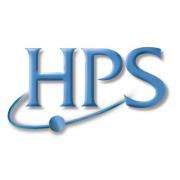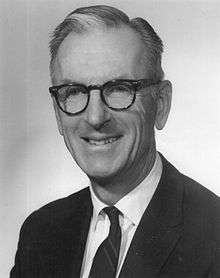Health Physics Society
The Health Physics Society (HPS) is a nonprofit scientific professional organization whose mission is excellence in the science and practice of radiation safety. The specific purposes of the society's activities include encouraging research in radiation science, developing standards, and disseminating radiation safety information. Society members are involved in understanding, evaluating, and controlling potential risks from radiation relative to the benefits.
The Society was formed in 1955, with an organizational meeting in June, 1955 at Ohio State University Columbus, Ohio. As of 2013, the membership consists of approximately 5,500 scientists, physicians, engineers, and other professionals. The headquarters are in McLean, VA. The society is an affiliate of the American Institute of Physics.[1]

Activities
| Discipline | Health physics |
|---|---|
| Edited by | Michael T. Ryan |
| Publication details | |
| Publisher | |
Publication history | 1958-date |
| Frequency | monthly |
| 1.017 | |
| Indexing | |
| ISSN |
0017-9078 (print) 1538-5159 (web) |
| Links | |
It publishes Health Physics since 1958, a peer reviewed scientific journal; Health Physics News for material of interest to members, and Operational Radiation Safety. It operates a public information website, "Radiation Answers", and has begun a series of special publications (The first, Radiation and Risk: Expert Perspectives was published on March 2012.)[2]
It holds its annual meeting in July, and a mid-year meeting in January or February.[3]
The society's archives are held at the University of Tennessee, Knoxville.[4]
Organization
The society has 37 geographically based chapters, all in the United States, except for one chapter in the Georgian Republic[5] and one in Taiwan; there are 8 Sections on special interests.[6]
Awards
- Robley D. Evans Commemorative Medal
- Distinguished Scientific Achievement Award
- Elda E. Anderson Award
- Founders Award
- Fellow Award
- Distinguished Public Service Award
- Geoffrey G. Eichholz Outstanding Science Teacher Award
- National Student Science Award
- Health Physics Honor Roll
- G. William Morgan Lectureship Award
- Robert S. Landauer, Sr., Lectureship Award
- Dade Moeller Lectureship Award
Meetings
The First Annual Meeting was held in 1956 at the University of Michigan.[3]
The 57th Annual Meeting of the society was held at Sacramento, California on July 22–26, 2012.
The 58th was held July 7–11, 2013, in Madison, Wisconsin; the 59th was held in Baltimore in July 2014 and the 60th in Indianapolis in 2015.[7]
- Midyear Topical Meetings
The 47th, Nuclear Power Radiation Safety: Learning from the Past to Protect the Future will be held 9–12 February 2014, Baton Rouge, Louisiana.[7]
Formation of the Health Physics Society
In the midyear issue of Science the announcement came of the formation new national scientific organization for health physicists at a 3-day Health Physics Conference at Ohio State University in Columbus, Ohio on 14 June 1955.[8] The organization was temporarily named "Health Physics Society", and Karl Z. Morgan of the Health Physics Division of Oak Ridge National Laboratory was elected interim president. Other interim officers were:
- Frederick P. Cowan, Head, Health Physics Division Brookhaven National Laboratory, Upton, N.Y., vice president, and
- Elda E. Anderson, director of the education and training department of the Health Physics Division, Oak Ridge National Laboratory, secretary-treasurer.
First Board of Directors
Talks regarding the formation of a professional society had been ongoing for several years. The health physicists had decided to form an independent organization rather than attach to an existing group.
Directors of the Health Physics Society included:
- Herbert Mermagen, University of Rochester, Rochester, N.Y.
- Edgar Charles Barnes, manager of industrial hygiene, Westinghouse Atomic Power Division, Bettis Field, Pittsburgh, Pennsylvania
- John W. 'Jack' Healy, General Electric Co., Hanford, Washington
- William Taylor Ham, professor of biophysics, Medical College of Virginia, Richmond, Virginia
- C. Maurice Patterson, DuPont Atomic Energy Plant, Aiken, S.C.
- G. W. C. Tait, Health Physics Branch, Atomic Energy Co. of Canada, Ltd., Chalk River, Ontario, Canada
- Francis J. Bradley, superintendent of radiation safety at Ohio State University and organizer of the first Health Physics Society Conference
- Walter Dunhan Claus, (annual salary $12,000), Division of Biology and Medicine, Biophysics Branch, U.S. Atomic Energy Commission, Washington, D.C.[9]
- John E. Pickering, department of radiobiology, School of Aviation Medicine, Randolph Air Force Base, Texas
- William E. Nolan, Radiation Laboratory, University of California, Berkeley, California
William Edward Nolan

Life and Times
William Edward Nolan, Jr. was born on 12 July 1914 in Boston, Massachusetts and died on 27 September 1985 in Livermore, California at the age of 71. Nolan and his wife Vivian are buried at Saint Michael’s Cemetery, Livermore, Alameda County, California. His father was William Edward Nolan and worked on the railroad. His mother’s name was Mary Handrahan. Nolan had five brothers and sisters.
Nolan met his wife while she was undergoing a physical examination for entry into the United States Navy Nurse Corps. Nolan took the x-ray as part of her physical exam. Nolan married Dorothy Vivian on 2 August 1945. Nolan served in the US Navy during World War II and achieved the rank of Pharmacists Mate 2nd Class, PhM2. Dorothy served as an Lieutenant (junior grade) LTJG officer in the US Navy Nurse Corps during World War II. In 1956 Nolan first moved to El Cerrito, California and finally settled in Livermore, California and worked in the Donner Lab, Lawrence Berkeley National Laboratory at the University of California, Berkeley, California.[10][11]
In 1945 Nolan started work at Lawrence Berkeley National Laboratory (LBL) as a laboratory technician. For a time he worked at Lawrence Livermore National Laboratory and returned to LBL in 1970 and worked with Luis Walter Alvarez in Group A as the group program administrator.[12][13] The work with Alvarez was productive and several patents were awarded for projects from optical lenses and systems to particle detectors.[14][15][16][17][18][19][20] Nolan teamed with H. Wade Patterson to conduct a survey of dental facilities in the San Francisco, California area.[21] A portable ionization chamber and DuPont type 552 and type 558 film-based radiation monitoring devices were utilized to collect the data.[22][23]
Nolan also worked at Site 300 at Livermore.[24][25] Nolan was involved with the tests at Bikini Atoll and Johnston Atoll in the Pacific Ocean. In 1970, Louis Alvarez completed a study of the pyramids at Giza near Cairo, Egypt. Alvarez published a report titled: "Search for Hidden Chambers in the Pyramids" and credited Nolan for his assistance with the project.[26][27]
Nolan retired from LBL after 33 years of service in 1977. Nolan died on 27 September 1985 from sprue known today as Celiac disease.
Publications
- Nolan, W. E., and H. W. Patterson. (26 November 1952). Radiation Hazards from the Use of Dental X-ray Units. UCRL-1882 Rev. Radiation Laboratory, University of California, Berkeley, CA. [SRDB Ref ID: 71807].
- Nolan, W. E. (1953). Radiation hazards to the patient from oral roentgenography. The Journal of the American Dental Association. 47(6): 681-684.
- Nolan, W. E., & Patterson, H. W. (1953). Radiation Hazards from the Use of Dental X-Ray Units 1. Radiology. 61(4): 625-629.
- Nolan, William E., Schrader, George F., & Fitzgerald, Gordon M. (1954). An Automatic Exposure Controller for Roentgenographic Examination (No. UCRL-2774). Radiation Lab., Univ. of Calif., Berkeley.
- Nolan, William E. (28 December 1954). Radiation Hazards of Concern to the Dentist. American Association for the Advancement of Science, Dental Section. University of California, San Francisco. School of Dentistry. Alumni Association. The Newsletter.
- Nolan, W. E. (13 November 1958). “Progress Report on Film Badge Program,” memorandum to D. C. Sewell, University of California, Lawrence Radiation Laboratory, Livermore, California.
- Alvarez, Luis W. (6 February 1970). Search for Hidden Chambers in the Pyramids. Science, New Series, 167(3919):832-839. Alvarez acknowledges the assistance of William E. Nolan.
See also
- Health physics
- American Academy of Health Physics, open only to those certified by the American Board of Health Physics.
References
- ↑ http://www.aip.org/member-societies
- ↑ Joxel Garcia; Howard Dickson; Richard Vetter; Louis Wagner; Kathryn Higley; Bernard Cohen; Robert Peter Gale; Robert Emery (2013). Radiation and Risk: Expert Perspectives (SP001 - 0) (PDF). Health Physics Society. p. 60. Retrieved Sep 2013. Check date values in:
|access-date=(help) - 1 2
- ↑
- ↑
- ↑
- 1 2 "Health Physics Society Conferences and Meetings". Retrieved 5 September 2013.
- ↑ "News of Science". Science. 122 (15 July 1955): 112. 15 July 1955. doi:10.1126/science.122.3159.112.
- ↑ Official Register of the United States, 1952. U.S. Civil Service Commission, Washington, D.C.
- ↑ http://www.cdc.gov/niosh/ocas/pdfs/tbd/lbnl-r2.pdf
- ↑ Patterson, H. W., and R. H. Thomas, editors. (1994). The History of Accelerator Radiological Protection, Personal and Professional Memoirs. Nuclear Technology Publishing, [SRDB Ref ID: 33209].
- ↑ Whaley, Baird G. (1995). Human Radiation Studies: Remembering the Early Years. US Department of Energy. Office of Human Radiation Experiments.
- ↑ Galison, Peter. (1 October 1997). Image and Logic: A Material Culture of Microphysics. University of Chicago Press.
- ↑ Lawrence, E. O., McMillan, E. M., & Alvarez, L. W. (1960). Electronuclear Reactor (No. US 2933442)
- ↑ Alvarez, Luis W. (21 February 1967). "Two-element variable-power spherical lens." U.S. Patent 3,305,294. Washington, DC: U.S. Patent and Trademark Office.
- ↑ Alvarez, Luis W., and William E. Humphrey. (21 April 1970). "Variable-power lens and system." U.S. Patent No. 3,507,565. Washington, DC: U.S. Patent and Trademark Office.
- ↑ Alvarez, Luis W., Stephen E. Derenzo, Richard A. Muller, Robert G. Smits, and Haim Zaklad. (25 April 1972). "Subatomic particle detector with liquid electron multiplication medium." U.S. Patent No. 3,659,105. Washington, DC: U.S. Patent and Trademark Office.
- ↑ Alvarez, L. (19 June 1973). "Method of making fresnelled optical element matrix." U.S. Patent No. 3,739,455. Washington, DC: U.S. Patent and Trademark Office.
- ↑ Alvarez, L. (6 August 1974). "Optical element of reduced thickness." U.S. Patent No. 3,827,798. Washington, DC: U.S. Patent and Trademark Office.
- ↑ Alvarez, L. (13 August 1974). "Method of forming an optical element of reduced thickness." U.S. Patent No. 3,829,536. Washington, DC: U.S. Patent and Trademark Office.
- ↑ Nolan, W. E., and H. W. Patterson. (26 November 1952). Radiation Hazards from the Use of Dental X-ray Units. UCRL-1882 Rev. Radiation Laboratory, University of California, Berkeley, CA.
- ↑ Nolan, W. E., and H. W. Patterson, 1952, Radiation Hazards from the Use of Dental X-ray Units, UCRL-1882 Rev., Radiation Laboratory, University of California, Berkeley, CA, November 26, [SRDB Ref ID: 71807].
- ↑ Hughes, Sally Smith. (1982). John W. Gofman. Medical research and radiation politics: oral history transcript. Berkeley, Calif. University of California.
- ↑ ”Science and Technology Review (September 1998)". "A Short History of the Laboratory at Livermore".
- ↑ Spanos, Stephen, Fix, John J., Thomas, Elyse M., Szalinski, Paul A., Turpin, Baynard, Turner, James E., East, James, Langille, Elizabeth A., and Thomas, Bill R. (10 May 2010). Site Profile for the Lawrence Berkeley National Laboratory. ORAU Team Dose Reconstruction Project for NIOSH. ORAUT-TKBS-0049.
- ↑ Alvarez, Luis W. (6 February 1970). Search for Hidden Chambers in the Pyramids. Science, New Series, 167(3919):832-839.
- ↑ Alvarez, Luis W. (30 December 1987). Discovering Alvarez: Selected Works of Luis W. Alvarez with Commentary by His Students and Colleagues. University of Chicago Press. Chicago, IL.
External links
- Radiation Answers, an information web site for the general public operated by the society
- American Institute of Physics